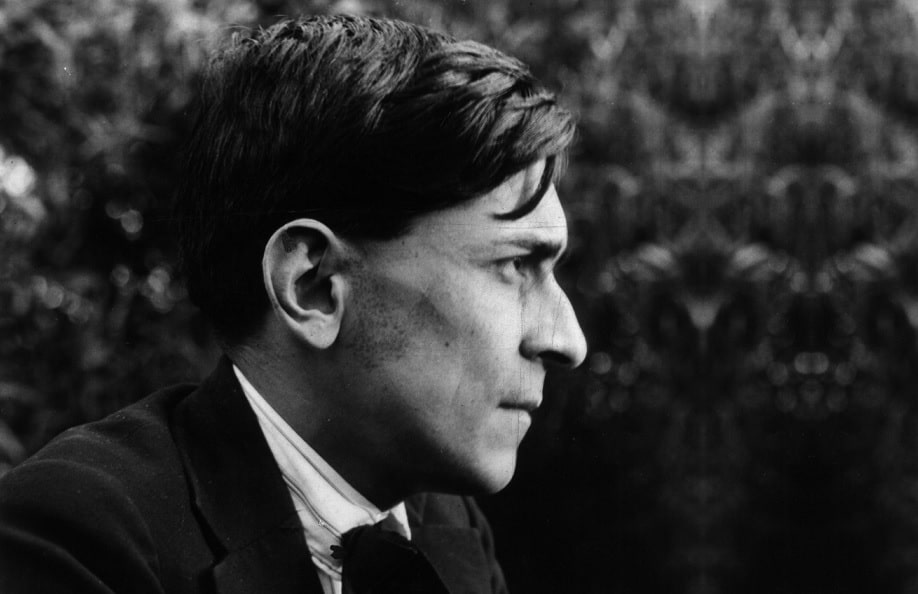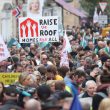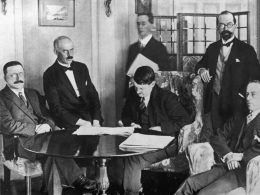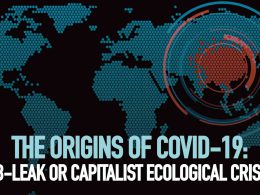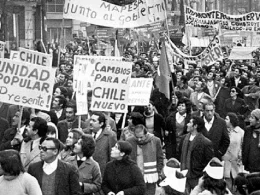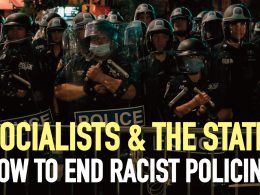José Carlos Mariátegui was one of Latin America’s greatest Marxists, not only for his prescient theoretical works but also for his role in the Peruvian labour movement. Grasping the significance of his contributions, and their relevance today, requires giving an accurate account of his ideas and actions, how he dedicated his life not only to interpreting the world, but to changing it. Article written by Mauro Espínola and Darragh O’Dwyer from International Socialist Alternative
As the historic mass revolt swept Peru earlier this year, the enduring legacy of José Carlos Mariátegui resonated at every turn. The CGTP trade union federation that called a general strike demanding the resignation of coup-president Dina Boluarte was founded by Mariátegui in 1929; the reformist Perú Libre, organization of the deposed Pedro Castillo, claims to be a ‘Mariateguist’ party; and, the Peruvian revolutionary’s brilliant insights that ‘the indigenous question’ would be central in the class dynamics of the Latin American revolution was once again confirmed when Quechua and Aymara people stood in the frontlines of the uprising.
But, as with all revolutionary leaders who leave an indelible imprint in the consciousness of the masses, Mariategui’s real record is often distorted. Some condemn him as little more than a petty-bourgeois romantic. Others celebrate his supposedly ‘heterodox’ ideas as proof that Marxism is inherently eurocentric, inapplicable to the very different context of Latin America. Then there are those that, unaware of the Peruvian Marxist’s work and struggles, label him a mere “intellectual” without understanding and vindicating his legacy.
In fact there are no shortage of tendencies that utilize Mariátegui to justify all manner of reformist, opportunist and even outright reactionary politics. The most notorious being Sendero Luminoso — Shining Path, disgraced ‘left-wing’ Maoist guerrillas that wreaked havoc amongst the very indigenous and peasant communities they claimed to defend. This, despite their very namesake being a reference to Mariátegui’s pronouncement that “Marxism–Leninism will open the shining path to revolution.”
In reality, José Carlos Mariátegui was one of Latin America’s greatest Marxists, not only for his prescient theoretical works but also for his role in the Peruvian labor movement. Grasping the significance of his contributions and their relevance today requires giving an accurate account of his ideas and actions and how he dedicated his life not only to interpreting the world, but to changing it.
Early life in Peru
In some ways, José Carlos personified the contradictions of Peruvian capitalism. Born in 1894, his father descended from the upper echelons of Peru’s elite, while his mother was mestizo with indigenous ancestry. “In him fused the blood of the conquistadors and that of the original inhabitants of ancient Peru”, writes Peruvian poet Maria Weiss. Nevertheless, the family were cast into poverty after the father walked out, leaving his mother to care for a young José Carlos and his two brothers.
More hardship struck when Mariátegui suffered a life-changing injury to his leg in childhood, one that required constant medical attention and would plague him for the rest of his life. At the age of 14 he dropped out of formal education and began working as printers’ assistant at Peru’s La Prensa. In this environment Mariátegui thrived, voraciously reading anything he could get his hands on and quickly graduating to journalism. Completely self-taught, by 17, he was a regular columnist for Peru’s main paper El Tiempo focussing on avant garde art and culture.
The stormy class battles that convulsed Peru in the 1910s pushed Mariátegui to draw more radical political conclusions. A general strike for the 8 hour day in 1911, a series of indigenous uprisings in the countryside and the development of a fervent student movement all had an impact on the young Mariátegui. As he would later remember, from 1918 he “turned resolutely toward socialism.” The following year he launched La Razón, a socialist newspaper which gained authority within an increasingly militant Peruvian working class. When the masses erupted onto the streets in 1919 in response to a dire cost of living crisis, the most advanced layers recognized Mariátegui himself as a leader of the movement.
Yet the nascent Peruvian socialist movement was eclipsed by former president Augusto Leguía. Riding the wave of discontent and promising a populist programme of reforms, Leguía quickly revealed his true colours — taking power by cracking down on left activists and organizations. Unsurprisingly, La Razón and Mariátegui were prime targets. The new government (correctly seeing him as a threat) offered Mariátegui an ultimatum: stay in Perú and go to prison, or flee to exile in Europe. José Carlos and his co-editor, César Falcón, chose the latter.
Revolution and Counter-Revolution in Europe
In 1919, Mariátegui touched down in a Europe riven by economic and political instability, where the ruling class feared for the future existence of capitalism, and the Bolshevik revolution offered a beacon of inspiration for workers across the continent. This left a deep impression on Mariátegui, who became convinced by the ideas of Marxism, and rightly concluded that a Leninist revolutionary party was an essential ingredient for the working class to take power.
His political development continued apace during his time in Italy, where he spent most of his time. Mariátegui arrived with the biennio rosso underway, a period that provided an intensely educational experience for the young revolutionary. In 1921 he attended the historic Livorno Conference, at which the Italian Socialist Party split. Mariátegui sympathized with the revolutionaries who went on to form the Italian Communist Party and join the Third International, led by, among others, the Italian revolutionary Antonio Gramsci.
Mariátegui’s time in Italy was fundamental for his political development, who saw a Marxist program as a means to understand and transform Peruvian and Latin American reality. From that moment on, the name of José Carlos Mariátegui became inseparably associated with revolutionary Marxism.
Back to Peru: Amauta and the formation of the Peruvian Socialist Party
Mariátegui returned to Peru in 1923, after four years of exile, beginning his political activity in the Andean country. He came into contact with the then student leader Victor Raul Haya de la Torre, who a year later in 1924 would form the American Popular Revolutionary Alliance (APRA).
Like other revolutionary Marxists, such as the Cuban Julio Antonio Mella, in the beginning Mariátegui sympathized with APRA as it presented itself as an anti-imperialist front. However, by 1928 and 1929 both Mariátegui and Mella distanced themselves from APRA and Haya de la Torre, pointing out that anti-imperialism in Latin America was only possible within the framework of a revolutionary struggle of the world proletariat against capitalism. In other words, anti-imperialism was not possible in exclusively national or regional frameworks, as Haya de la Torre thought, but would have to pass through the revolutionary struggle of the working class at the world level.
In 1926, Mariátegui launched Amauta, which became a magazine of great regional importance. In this regard, it is interesting to note an appreciation of Amauta that appeared in Clave, the magazine edited by Trotsky in Mexico, which helps to grasp the importance of the work of the Peruvian Marxist and the role of his journal:
There are magazines that are valuable for the quality of their contributors or the intelligent arrangement of their materials, and magazines whose highest merit lies in the assiduous work of their editor. We do not have to repeat that Amauta was of the latter, since we have already assured that it was valuable above all for the personal contribution of Mariátegui.Enrique Espinoza, On the tenth anniversary of the death of José Carlos Mariátegui, Clave, num. 8–9, April-May 1940
Amauta was a pivotal moment in Mariátegui’s development. In its pages he would lay out a good part of his Marxist theoretical work. Amauta was, in the words of its director “a magazine of ideological definition”. So, in 1927 Mariátegui was arrested and imprisoned along with other socialists for his criticism of the Leguía government. In this context, Mariátegui further developed his criticism of Haya de la Torre and APRA with whom he would break with in 1928. By the end of that same year he initiated the formation of the Peruvian Socialist Party, linked to the Communist International, and a year later, in 1929, he founded and organized the General Confederation of Peruvian Workers.
His connection to the Third International, including the impact of the debate at the VI Congress, played a significant role in the political contours of Mariátegui’s final years. It is relevant to point out that despite the process of consolidation of Stalinism in the Soviet Union and in the Communist International, barely incipient in the Communist Parties of Latin America, Mariátegui cannot be labeled a Stalinist. His criticisms of the Comintern’s policies, especially with respect to the peasant and indigenous question, are very clear in this respect. Although he did not join the Left Opposition, in several texts he expresses a clear admiration for Leon Trotsky. However, it is likely that Mariátegui underestimated the scope of the bureaucratic counterrevolution. If we analyze in more detail his ideas and their overlap with those of Trotsky, we can imagine that his tensions with Moscow would have become more acute had he not died on April 16, 1930 at the age of 36. The Peruvian labor movement had lost a giant.
Mariátegui and the Permanent Revolution
One of Mariátegui’s most significant political contributions is his work “Seven Interpretive Essays on Peruvian Reality” in which he analyzed the class nature of Peruvian society. Mariátegui went right back to the days of conquest and colonization whereby the Incan civilization was toppled, its people subjugated and the lands plundered for natural resources — particularly precious metals like gold and silver.
Despite achieving formal independence from the Spanish empire in 1824, Peru remained subordinate to an ascendent British imperialism. English capitalism had a material interest in curbing the economic development of Peru so that it remained a source of cheap raw materials, essential fuel for Britain’s industrial revolution. As Mariátegui explained: “Spain wanted and kept Peru as a producer of precious metals. England preferred Peru as a producer of guano and nitrates. But the motive remained the same; only the times changed.”
Notwithstanding a guano boom, the vast majority of wealth continued to flow outwards to Europe. An over reliance on the exportation of primary materials left the economy particularly vulnerable to price fluctuations on the world market. When a recession in the 1870s ground large tracts of North American and European industry to a halt, the demand for guano evaporated. Likewise, in 1912, Peru’s booming rubber industry suddenly collapsed after rival plantations in south-east Asia were established leading to a sharp drop in the price of rubber. An industry built upon the barbaric enslavement of indigenous people, its demise condemned hundreds of thousands to even more grinding poverty.
Mariátegui understood that these crises did not come as a result of unwise economic policies but were rooted in the very structure of Peruvian capitalism. Born into a world system already dominated by the great powers, the Peruvian bourgeoisie were content to play second fiddle, merely facilitating the plunder of Peru’s resources and the super-exploitation of its laboring masses. As he explained in a text presented to the First Latin American Communist Conference in June 1929, “the national bourgeoisies, who see cooperation with imperialism as their best source of profits, feel themselves secure enough as mistresses of power not to be too greatly preoccupied with national sovereignty.” In one of his last writings in 1940, Trotsky likewise characterized the “belated” South American bourgeoisie as a “thoroughly venal agency of foreign imperialism”.
Mariátegui and Trotsky
Mariátegui would also independently draw very similar conclusions to those of Trotsky as worked out and distilled in the theory of the permanent revolution. Trotsky’s perspective stood in contrast to the dominant view in the socialist movement as organized in Second International that in backward countries such as Russia, a ‘bourgeois-democratic’ revolution would have to be carried out as a necessary stage in the struggle for socialism. Such an advance would shake off those feudal remnants that impeded the full development of capitalist production and install a parliamentary system of government in place of Tsarist autocracy. In other words, Russia would need to first go through the same ‘stages’ as nations like England and France before socialist change was realizable.
Mariátagui, like Trotsky, understood that such a view clashed with the reality that the colonial and semi-colonial countries did not exist in isolation but fulfilled a specific role in a world market dominated by imperialism. Feudal elements that seemingly belonged to another historical epoch were reshaped to fit into a capitalist economy subservient to imperialist interests. In the case of Peru, agricultural production in the brutal latifundias relied on conditions of semi-slavery and debt peonage. Yet, as Mariátegui explained, the major landowners were completely entwined with the industrial bosses: “Mining, commerce, and transport are in the hands of foreign capital. The latifundistas have been satisfied to serve as the latter’s intermediaries in the production of sugar and cotton.”
Existing side-by-side these feudal vestiges were modern forms of industry that made use of the most up-to-date technology. Here again Mariátegui’s ideas overlapped with Trotsky’s concept of ‘uneven and combined development’. As the latter wrote on Russia’s economic development:
Almost without highways, Russia was compelled to build railroads. Without having gone through the European artisan and manufacturing stages, Russia passed directly to mechanised production. To jump over intermediate stages is the way of backward countries.Leon Trotsky, In Defence of October, 1932)
Similar processes in Perú gave birth to an industrial proletariat which, though numerically small, wielded an enormous social weight. Given that the servile Peruvian bourgeoisie stood opposed to any movement that would threaten its power and profits, the task of bringing society forward fell on the shoulders of the working class. And, as the manifold miseries faced by the Peruvian masses could not be ended on the basis of capitalism, the revolution would have to move in the direction of socialism or be doomed to failure.
Importantly, for Trotsky the revolution is permanent — or uninterrupted — in another sense. After coming to power, a workers’ state would come under immediate threat from the forces of counter-revolution, domestically and internationally. Such was the case in Russia from 1917 to 1922 when western powers provided military support to the reactionary White army in the hope of “strangling Bolshevism in its cradle”, to use Winston Churchill’s phrase. Latin America’s 20th century likewise brims with examples of revolutionary mass movements confronting the wrath of US imperialism.
In order to survive, consolidate and ultimately triumph, a revolution in semi-colonial and colonial countries would have to spread beyond borders to the industrially advanced nations, calling on the working class of the metropolitan centers to wrest power from the capitalists and lay the basis for an international plan of production. Indeed this was Lenin’s view, one that stood in stark contrast to the theory of ‘Socialism in one country’ which placed the narrow interests of the Soviet bureaucracy over those of the international working class.
Once again, Mariátegui echoes the conclusions drawn by Trotsky. While the Comintern had adopted Socialism in One Country as their official policy in 1926, Mariátegui’s writings thereafter show his resolute commitment to internationalism, not merely as a lofty ideal, but as a strategic necessity in the struggle for socialism:
The Latin American Revolution will be nothing more and nothing less than a stage, a phase of the world revolution. It will simply and clearly be the socialist revolution. Add all the adjectives you want to this word according to a particular case: “anti-imperialist”, “agrarian”, “national-revolutionary”. Socialism supposes, precedes, and includes all of them.Aniversario y Balance, 1928
The ‘indigenous question’ in Latin America
Undoubtedly, Mariátegui’s analysis of the indigenous question is his greatest contribution, placing it as one of the classics of Marxism in Latin America. For in the case of Peru and Latin America in general, the intertwining of class exploitation and racial oppression presented specific problems for the socialist movement. This was the result of the dawn of capitalism and the way in which Latin America was incorporated into the world market as a supplier of raw materials, and with them the indigenous people enslaved and forced to be labor at the service of capitalist accumulation. Mariátegui correctly understood that the oppression of the indigenous was completely interwoven into the economic system:
For Yankee or British imperialism, the economic value of these lands would be much less if alongside their natural riches they did not possess a poor and miserable indigenous population which, with the help of the national bourgeoisies, could be massively exploited.The Problem of Race in Latin America
Mariátegui was not alone in opposing the injustices faced by the indigenous, but he adopted a markedly different approach from that of the liberal reformists. The latter saw the indigenous question as a moral issue, a matter of providing better laws or adequate education to lift them out of their misery. Mariátegui, on the other hand, argued that “the indigenous problem cannot find its solution in an abstractly humanitarian formula, in a merely philanthropic movement.” (The Problem of Race)
Mariátegui rejected the racist idea that indigenous people were intrinsically inferior, a myth developed as a justification for conquest and dispossession, and relied on to enable the predominantly white bourgeoisie of European descent to maintain its dominance, despite the existence of laws formally granting rights and protections to native peoples.
Instead, Mariátegui understood that it is the economic conditions of backwardness, fostered by capitalism itself, that oppress peasants and indigenous peoples. In that sense, for Mariátegui the peasants are largely part of the working class, positioning the indigenous struggle against oppression and misery as central to the struggle of our class. “The vanguard of the workers has at its disposal those militant elements of the Indian race who, in the mines or in the urban centers, particularly in the latter, come into contact with the trade union movement, assimilate themselves to its principles and are trained to play a role in the emancipation of their race,” wrote Mariátegui in a communiqué to the First Latin American Communist Conference of June 1929.
Mariátegui strove to understand the specific problems of indigenous people, studying their traditions, their culture and their struggles. He did so with the desire to win them over to the socialist movement, in which they had an essential role to play. To do so would mean overcoming the understandable distrust that many indigenous people felt toward mestizo workers. He therefore recognized the importance of recruiting and training indigenous cadres who could agitate in Quechua and Aymara, and win the confidence of the exploited and oppressed. It was also essential to wage a conscious battle against racist ideas within the labor movement. “It is not uncommon,” noted Mariátegui, “to find in the very elements of the city that proclaim themselves revolutionaries, the prejudice of the inferiority of the Indian, and the resistance to recognize this prejudice as a simple inheritance or mental contagion from the surroundings.”
All of this was guided by the conviction that indigenous people would have to be the agents of their own emancipation: “The solution to the Indian problem has to be a social solution. Its realizers must be the Indians themselves”.
Burning relevance today
Far from succumbing to some form of cultural relativism, Mariategui was a dynamic scientific socialist who saw himself first and foremost as a militant in a global movement for a better world. He can be considered ‘heterodox’ only to the extent that one sees Marxism as a dogma, a rigid set of formulas into which a reality must neatly fit. But Mariátegui had a correct view of genuine Marxism as a body of thought developed upon the accumulated historical experience of the international working class, one that must be creatively and concretely applied to an ever-changing world, to deliver an analysis, program and strategy to facilitate its historic task of overthrowing capitalism and building society anew. Marxists today should likewise seek to apply Mariátegui’s key insights to a very different situation.
His conclusion that the bourgeoisie in Latin America is incapable of playing a progressive role has been unequivocally proven. Despite partial industrialization and acceleration of urbanization throughout the 20th and 21st century, Latin America remains subjugated to US and Chinese imperialism, unable to overcome the plethora of social crises engendered by feeble and dependent economies. And, the whirlwind of crises unleashed by the new age of disorder has only aggravated these tendencies, condemning millions to poverty, misery and hunger.
Yet the idea that some type of democratic or progressive capitalism is a necessary stage in the struggle for socialism continues to beset the movement. Be it the Andean-Amazonian capitalism promoted by Bolivia’s MAS government or Colombian president Gustavo Petro’s insistence on the need to ‘develop capitalism’, such views serve as a justification for alliances and negotiations with supposedly progressive sections of a national bourgeoisie. Nevertheless, by binding the working class and oppressed to their exploiters, these Popular Front style politics inevitably end in tragedy. A new wave of center-left governments that have come to power in the recent period have sadly opted for this path. The dangerous growth of the far-right and the coup against Pedro Castillo are cautionary tales of a reformism content on operating within the confines of capitalism.
Indigenous people are facing a particularly acute social catastrophe. Limited rights that have been won after decades of militant mass struggle are under attacks. Bolsonaro’s genocidal policies which have dismantled many land protections, paving the way for illegal miners to intrude on territories of groups like the Yanomami, causing untold suffering. Likewise, Jorge Alberto Morante Figari of the right-wing Fujimorista Fuerza Popular (Popular Force) took advantage of Peru’s political chaos in December to pass legislation to remove protection of uncontacted indigenous people in the Amazon, a boon to big business eager to remove any barriers to exploitation of people and the planet.
But just as in Mariátegui’s time, these same communities have responded to systemic violence and discrimination with heroic resistance. Unsurprisingly, they have taken to the front lines of the mass uprisings that have rocked the region since 2019. While these represented political earthquakes that shook entire regimes to their foundations they were hampered by a lack of organization, leadership and political program conscious of the need to break with capitalism. As new generations draw vital lessons from these experiences, Mariátegui’s ideas and the theory of permanent revolution will take on renewed relevance for the explosive period ahead in Latin America. The struggles of indigenous peoples, peasants, women and workers can be nourished and enriched by reclaiming the legacy of the Peruvian Marxist for their current battles and the socialist transformation of Latin America.





